
Can a “Granny Flat” Be Cool? A Palo Alto Architect Says YES!
Mary Maydan turned her home-design hobby into a thriving Silicon Valley architecture practice, and designed her own multi-generational family’s unusual home.
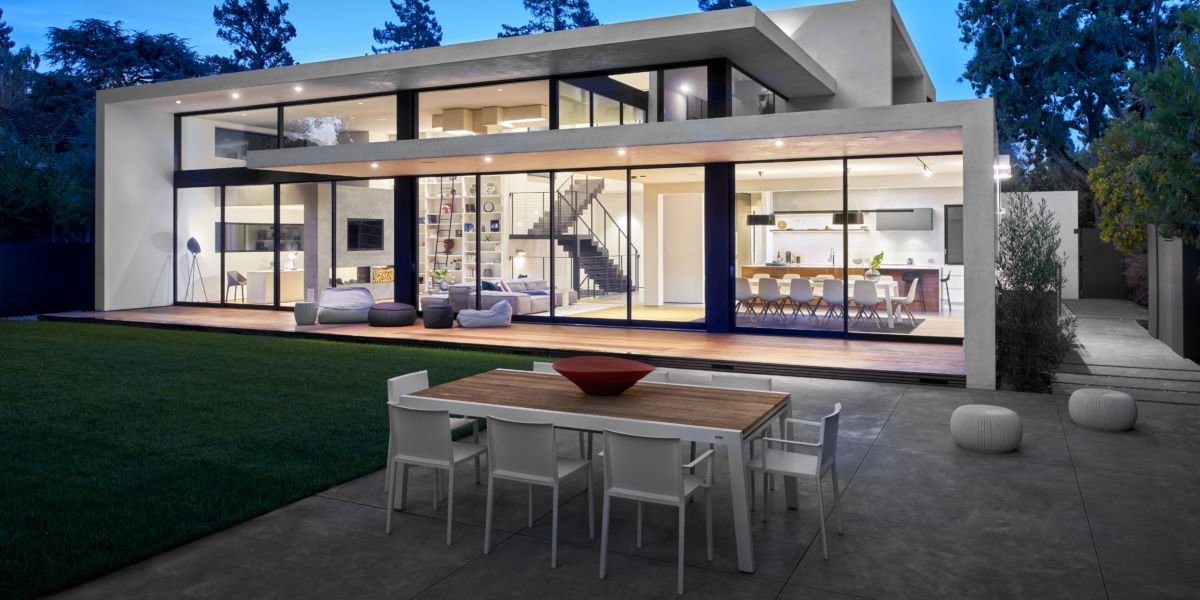
“About five years ago, I started marketing to my husband that I wanted to do another house,” says Mary Maydan, a Silicon Valley-based architect with an ultra-modern, glass-wall and flat-roof aesthetic. She had an idea to build a multi-generational family home in three distinct but connected living areas, which she calls floating boxes. “I wanted a basement area for our four kids, and a place for my parents to live that wasn’t detached from the house.”
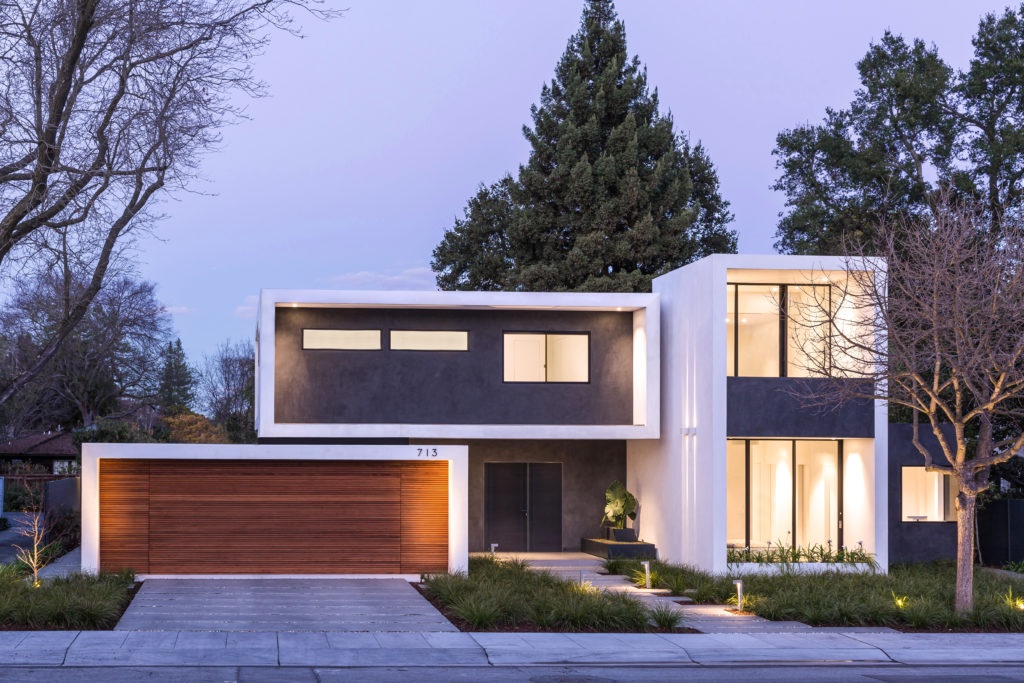
Harold Gomes
Three things about this synopsis of Maydan’s family home are noteworthy. One is that Maydan—who started designing homes as a hobby, skipped traditional architecture school, and earned her license by working with a mentor for eight years—describes her conversations with her husband, Dror, as marketing meetings (which, let’s be honest, they are). Two, there are eight people in an extended family living in a minimalist structure that is a bit of an anomaly in the more traditional Palo Alto neighborhoods. And the third is that she designed a modern apartment for her parents, Israeli immigrants well into their ’80s, that’s attached to the family home…and is significantly cooler than what most people imagine “mother-in-law suites,” or “granny flats” to be.
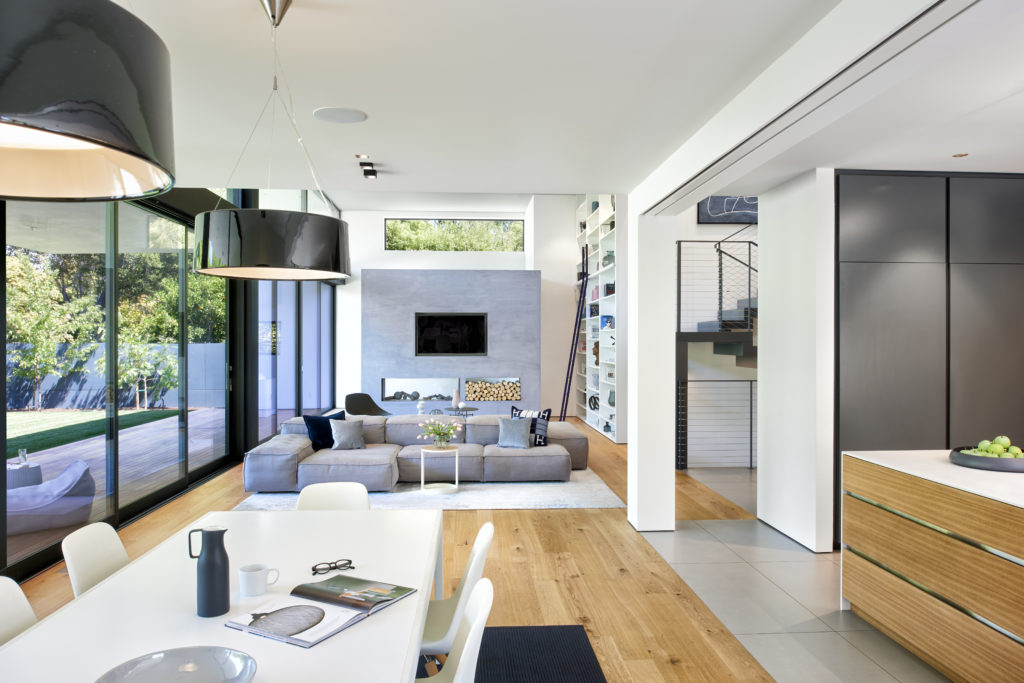
John Sutton
“My parents have lived with us for a while,” Maydan explains. “In our last house, they were in a detached back house. We had four small kids and they liked being away from the hustle and bustle of the house and having their own space. We would send the kids back there to spend time with them, but they had quiet and privacy. Now that they’re older, and our kids are older, we wanted them closer. They have their own space and a separate kitchen, but there’s a door that opens directly into the house.”
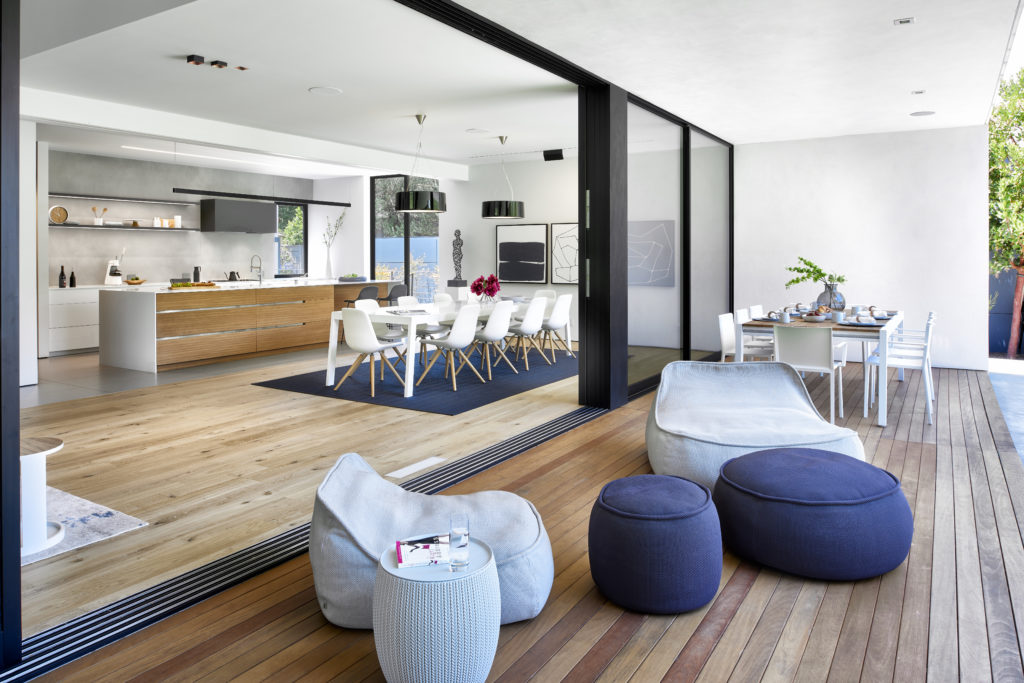
John Sutton
Maydan enjoys having them having directly access the main living area through a concealed doorway. And the floating boxes concept—with space for the grandparents that includes two bathrooms and an exterior entrance (essentially an attached ADU)—works well for the large family with high-school and college-age children.
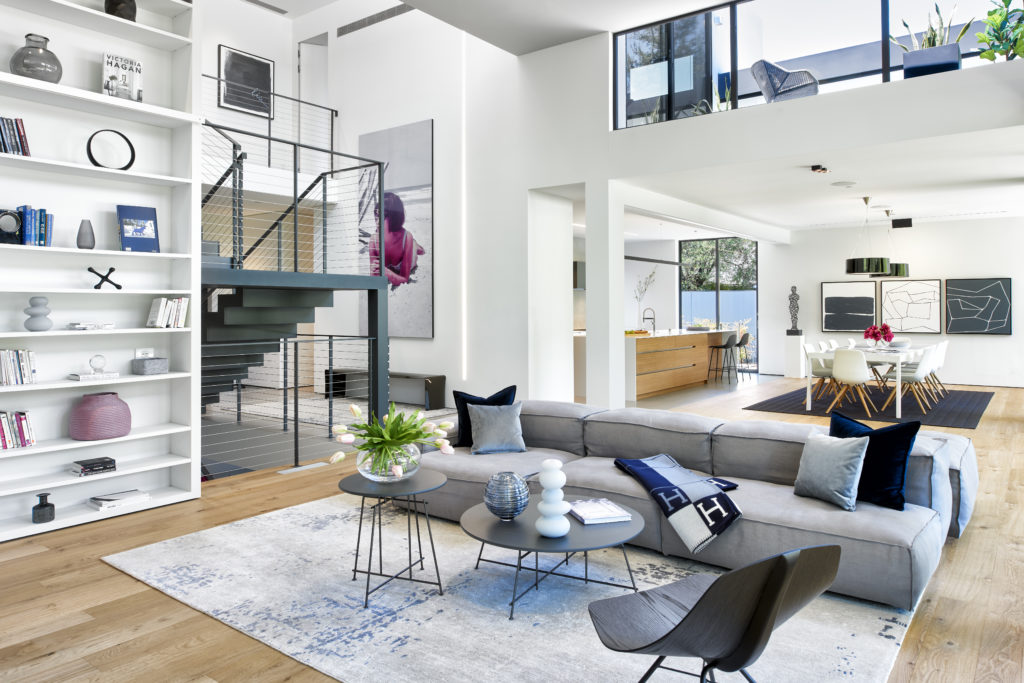
John Sutton
Maydan’s path to becoming a full-time architect and interior designer was unconventional. She moved from Israel to New York as a news journalist. After she met her husband, who works in the tech industry, they moved west. When she started designing their first house as an amateur, she fell in love with the process.
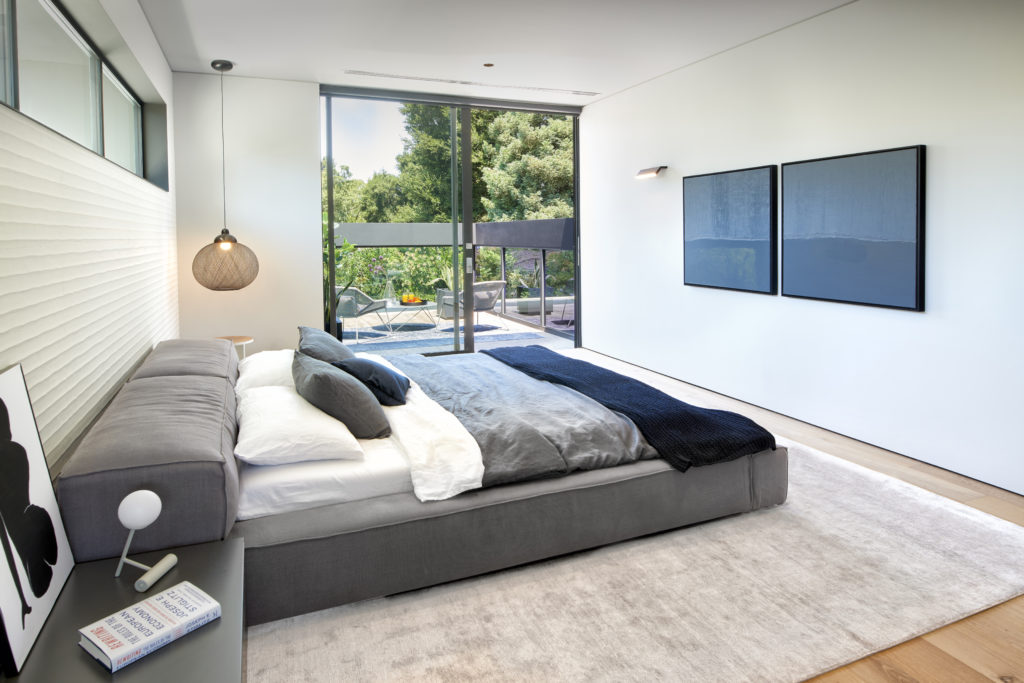
John Sutton
“It was challenging to find a modern architect in the area, so I worked with a very well-regarded one in Los Angeles. We were nearly finished with the process and then he died,” she says. “So I had to figure out how to translate the ideas into plans. I spent many days in the planning department trying to figure out how it could be done.”
Mid-way through the construction process, the home appeared in the local newspaper. Soon neighbors were asking her to design houses for them. Maydan worked alongside another architect as a supervisor, took a few classes at U.C. Berkeley, and after nearly a decade she was eligible to take all of the exams.
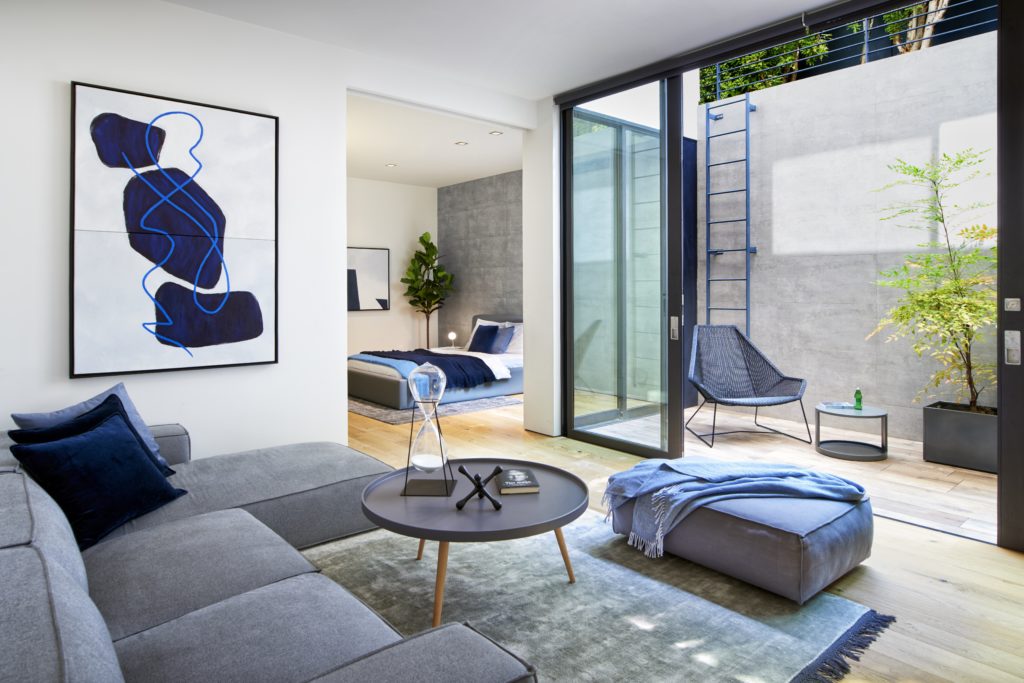
John Sutton
Her family home is the best expression of her work, which embraces energy efficiency and sustainability with low-VOC paints, tankless water heaters, solar panels, and a passive cooling system with overhangs that provide shade—all along the massive glass wall at the rear of the house. Maydan’s drawn to modern furniture from Living Divani and Poliform, and a restricted palette of white, blue, and gray.
“We built the house and moved in before COVID, not having any idea that we would have kids home from college and everyone working under the same roof,” she says. “It worked out well. We don’t need my parents to help us babysit the kids anymore. Now our 16-year-old will go to them for dating advice. Everyone has their own space, their own kingdom, but we feel really connected.”
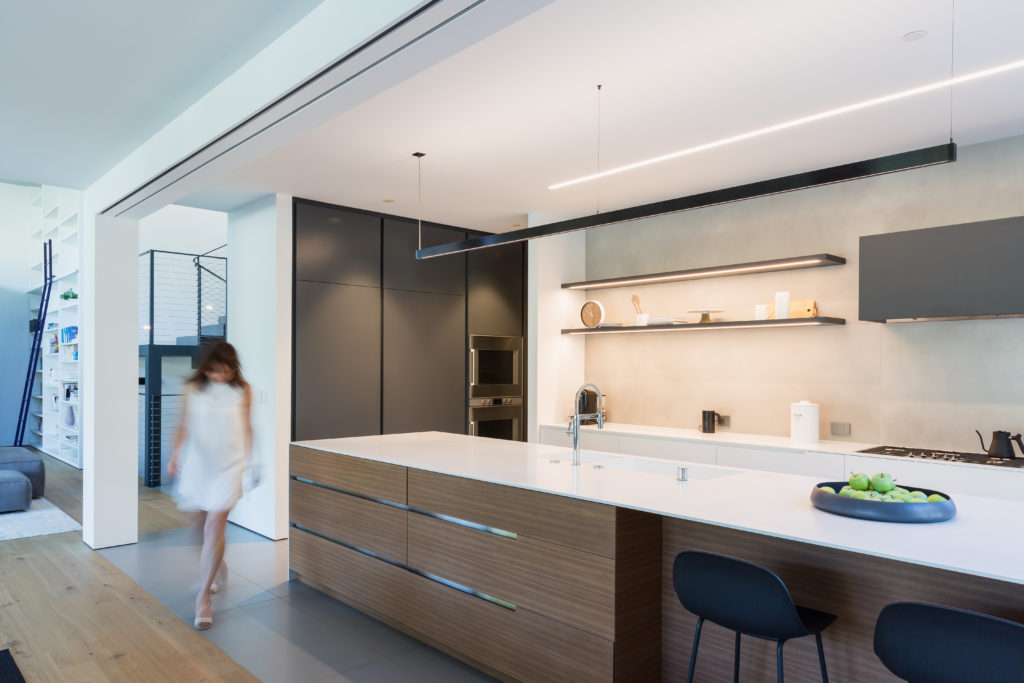
Harold Gomes
